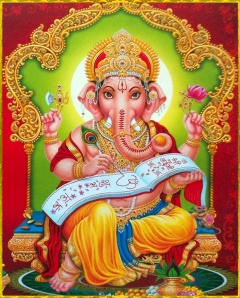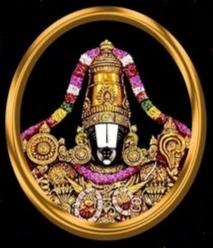How Pirates and Parrots Inspire Modern Adventure Stories
Why do the iconic images of pirates with feathered parrots perched on their shoulders continue to grip our imagination, centuries after the Golden Age of piracy ended? The enduring allure of these figures is not merely a quirk of pop culture, but a testament to deeper themes of exploration, rebellion, companionship, and the unknown. By tracing the historical roots and symbolic evolution of pirates and parrots, we can better understand how these motifs shape—and are reshaped by—contemporary adventure storytelling, from classic novels to cutting-edge games like Pirots 4. This article navigates that journey, bridging the world of high-seas swashbucklers to the uncharted frontiers of modern creativity.
- 1. Introduction: Why Pirates and Parrots Endure in Adventure Storytelling
- 2. The Historical Roots: Pirates, Parrots, and the Spirit of Exploration
- 3. Symbols of Rebellion and Mystery
- 4. Emotional Bonds and Loyalty on the High Seas
- 5. From Sea to Stars: How Pirate Tropes Shape New Frontiers
- 6. Case Study: Pirots 4 and the Reimagining of Pirate Adventure
- 7. Beyond the Stereotype: Unusual Inspirations from Pirate and Parrot Lore
- 8. Conclusion: The Lasting Influence of Pirates and Parrots on the Imagination
1. Introduction: Why Pirates and Parrots Endure in Adventure Storytelling
Adventure stories thrive on pushing boundaries—of geography, morality, and imagination. Pirates, with their lawless freedom, and parrots, with their exotic color and mimicry, embody the spirit of stepping beyond the known. This unique pairing has transcended its origins, becoming a shorthand for adventure, rebellion, and discovery in literature, film, and games. But what makes these symbols so resilient, and how have their meanings evolved?
2. The Historical Roots: Pirates, Parrots, and the Spirit of Exploration
a. The Realities of Pirate Life
The romance of piracy often masks a brutal reality. Historical pirates of the 17th and 18th centuries—such as Blackbeard (Edward Teach) and Anne Bonny—endured harsh, uncertain lives. Ships were cramped, disease-ridden, and subject to violent storms and mutinies. The average pirate’s life expectancy was shockingly low, with many dying in battle or at the hands of executioners. What united these men and women was not a love for violence, but a desire for autonomy and fortune beyond the rigid social orders of their time.
- Many pirates were former sailors fleeing oppressive naval discipline.
- Pirate codes of conduct, such as those of Bartholomew Roberts, established surprisingly democratic practices—voting on leaders and dividing loot equitably.
- Pirate ships were among the first workplaces to compensate injured workers, highlighting a pragmatic sense of camaraderie.
b. Parrots as Companions and Symbols
Parrots became associated with pirates for both practical and symbolic reasons. During the age of exploration, sailors returning from the Caribbean and South America brought back brightly colored parrots, prized for their intelligence and ability to mimic human speech. These birds—macaws, amazons, and cockatoos—were valuable both as companions and as exotic trade items.
- Parrots thrive in social settings and can develop strong bonds with humans, making them ideal ship companions.
- Their vivid plumage and unusual voices made them status symbols in European ports.
| Aspect | Pirates | Parrots |
|---|---|---|
| Symbolism | Freedom, rebellion, adventure | Exoticism, mimicry, loyalty |
| Historical Role | Naval outlaws, explorers | Shipboard companions, trade goods |
| Cultural Impact | Folk heroes, legends | Storytelling motifs, animal symbolism |
3. Symbols of Rebellion and Mystery
a. The Meaning Behind the Jolly Roger
The infamous “Jolly Roger”—a skull-and-crossbones flag—was one of history’s most effective psychological weapons. Far from random decoration, it was a calculated emblem, designed to strike terror and encourage surrender without bloodshed. Each pirate captain’s flag was unique, signaling not just danger, but a distinct identity and code.
- Blackbeard’s flag: Depicted a horned skeleton to invoke supernatural dread.
- Calico Jack’s flag: Featured crossed swords, signaling readiness for combat.
Over time, the Jolly Roger has evolved into a universal shorthand for rebellion against the establishment—a motif now echoed in everything from sports teams to hacker culture.
b. Parrots in Folklore and Storytelling
Parrots’ roles in folklore extend far beyond their link to pirates. In indigenous mythologies, parrots are messengers between worlds, bearers of secret knowledge, and emblems of transformation. Their ability to mimic voices blurs boundaries between human and animal, reality and performance—a quality exploited in adventure stories to add humor, suspense, or revelation.
- Robert Louis Stevenson’s Treasure Island (1883) cemented the parrot-pirate connection with Long John Silver’s famous companion, Captain Flint.
- Modern works often use parrots to reveal hidden truths, overhear secrets, or symbolize the protagonist’s inner voice.
The enduring appeal of pirates and parrots lies not in their historical accuracy, but in their power to symbolize “the thrill of the forbidden and the promise of discovery.”
4. Emotional Bonds and Loyalty on the High Seas
a. Parrots’ Social Behaviors: Feeding and Bonding
Modern ethology reveals that parrots, especially species like African Greys and Blue-and-Gold Macaws, are among the most intelligent and social of birds. In the wild, they form complex flocks, rely on vocalizations for cooperation, and develop lifelong pair bonds. On ships, these traits translated to intense loyalty and an uncanny ability to “read the room,” sometimes even alerting crews to danger.
- Parrots can recognize individual humans and respond emotionally to their moods.
- Feeding rituals—sharing food—are a primary way parrots form bonds, both with other birds and people.
- Stories abound of parrots warning crews of oncoming storms or eavesdropping on secret conversations.
These behaviors lend themselves to adventure stories, where the parrot becomes a barometer of trust and betrayal aboard ship.
b. Pirate Crews: Trust, Betrayal, and Camaraderie
Pirate crews were not loose mobs, but tightly knit communities bound by necessity. Studies of pirate articles (ship rules) show elaborate systems for dividing loot, compensating injury, and resolving disputes. Loyalty was paramount; betrayal could be deadly, but so could excessive rigidity. Historians like Marcus Rediker argue that pirate democracy—however rough—was an early form of social experimentation, where camaraderie was as vital as swordsmanship.
- Pirate stories often hinge on the tension between personal ambition and group loyalty.
- Modern narratives mirror this with found families, codes of honor, and the ever-present threat of mutiny.
5. From Sea to Stars: How Pirate Tropes Shape New Frontiers
a. The Evolution of the Pirate Archetype
From the swashbuckling anti-heroes of Errol Flynn films to the morally ambiguous captains of modern cinema, the pirate archetype has continually evolved. Today’s pirates are as likely to be hackers, rebels, or explorers of digital and cosmic frontiers as they are sea raiders. This adaptability is rooted in the universal appeal of the outsider who dares to defy convention.
- Star Wars: Han Solo is a space-age pirate whose loyalty is always in question.
- One Piece: This manga reinvents pirates as dreamers searching for ultimate freedom.
b. Adventure Stories in Uncharted Territories (e.g., Space)
Space, the “final frontier,” has become the new ocean for modern storytellers. The language of piracy—unmapped realms, treasure hunts, rival crews—transfers seamlessly to starships and alien worlds. Games and literature exploit these parallels, using classic pirate motifs to explore issues of colonialism, resource scarcity, and the ethics of exploration.
- In science fiction, “space pirates” embody the same tensions between law and liberty as their historical counterparts.
- Parrot analogues—intelligent alien creatures or AI companions—often serve as the emotional core for protagonists in these uncharted settings.
c. Solar Winds: Modern Dangers Mirroring Historical Perils
Just as pirates faced unpredictable storms and treacherous currents, today’s adventurers—whether in narrative fiction or interactive games—must contend with new dangers. In space-themed stories, “solar winds” and cosmic hazards stand in for hurricanes and reefs. The uncertainty of the unknown, and the need for cooperation and adaptability, remain central.
The pirate’s journey from sea to stars reflects humanity’s enduring fascination with risk, reward, and the bonds that hold crews together in the face of the unknown.
6. Case Study: Pirots 4 and the Reimagining of Pirate Adventure
a. How Pirots 4 Incorporates Classic Pirate and Parrot Motifs
Pirots 4, a critically acclaimed adventure game, demonstrates how classic pirate and parrot themes are reimagined for contemporary audiences. Players command a diverse crew, each with unique skills and loyalties, as they navigate procedurally generated islands, shifting alliances, and unpredictable weather. The inclusion of a parrot companion—capable of mimicking player commands and alerting to danger—directly draws from both historical fact and literary tradition.
- Game mechanics emphasize trust and betrayal, echoing real pirate codes.
- The parrot serves as a living



